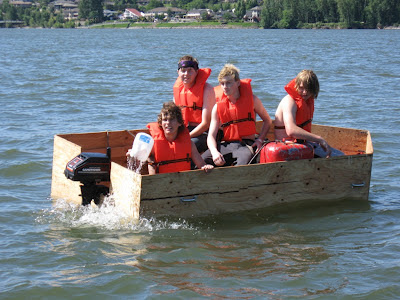I grew up in Queensland, the tropical State in Australia's north east. Apart from sugar cane, macadamia nuts, mangos and pawpaw, Queensland is famous for its distinctive houses, called Queenslanders. These timber houses emerged in the 1800s, influenced by the bungalows that were common in India (one of the world's oldest civilisations).
Quite a number of British Raj types chose to retire to Australia rather than go back to damp and dreary Britain, and they brought this tropical housing style with them. Here, it was interpreted in a uniquely Queensland way so that the more elaborate examples have fancy painted lattice or iron lacework.
The houses I grew up in had the four distinctive features of the typical Queenslander:
- Wide verandahs for shade and sheltered outdoor living spaces
- Lifted off the ground to allow cool breezes to circulate
- Timber construction which allows the building to cool at night
- High pitched metal roofs – the metal was reflective and cooled quickly at night
I remember lying in bed at night listening to the house creak and crack as it adjusted to cooler nightime temperatures. It was a friendly sound. And, oh! the secret adventures we had in the cool dark spaces under the house. Here's a poem about my sister's house.
Queenslanders were built from the 1800s through to the 1920s when Californian bungalows influenced the classic Queenslander. The climate-friendly features still prevailed.
After WWII, houses got wonderfully modern and all four climate-friendly features were ditched. Brick replaced timber, verandahs and window awnings were old-fashioned, houses were built on concrete slabs, and roofs became fashionably coloured. Increasingly, air-conditioning replaced ceiling fans.
All this came flooding back to me when I saw this Climate Progress article about an initiative in New York to paint roofs white.
A NASA survey of New York City’s rooftops last July showed that dark, heat-absorbing rooftops were up to 42 degrees F hotter than white rooftops. And that difference in heat can make a big difference in on-site energy use; painting a roof white can reduce air conditioning demand as much as 20 percent.I slapped my head and stomped around the house for a few minutes, muttering,
We're going to hell in a handbasket! What have we come to that we need the Big-Bertha-gun-scientists at NASA to tell us to paint our roofs white?It's not rocket science. It's common sense.
In Grandma's day, we listened to the traditional wisdom of our elders and made some sensible decisions. Now we get rocket scientists to tell us what to do (and then a whole bunch of people diss it anyway).
After I calmed down a bit, I took heart from a recent resurgence of the vernacular Queenslander house style. Lots of builders now offer Queenslander designs. You can even buy kit homes (exported world wide).
Here in New South Wales we don't build Queenslanders, but 12 years ago the State government implemented BASIX (Building Sustainability Index) to require all new dwellings and renovations to have climate-friendly features like insulation, window shades, and, yes, pale roofs. Roofing manufacturers now specify how their products comply with BASIX colour classifications.
NASA was not involved. All it took was dedication and commitment from a bunch of bureaucrats in the Department of Planning. Go bureaucrats! Grandma is proud of you!



















